Plant-based is all the rage these days, so how can we get a dose of our favorite plant into foods we love to eat?
We’ve been very successful in discovering new ways to use the cannabis plant for purposes other than getting high. Whether medical or recreational, marijuana use—and the cannabis industry in general—has never been more boutique and user-friendly.
With legalization impacting the landscape so profoundly via state laws, dispensaries are attracting a whole new crowd of customers. These people tend to already know that smoking cannabis is far from the only way to reap its many benefits.
The Social Acceptability of Eating
While smoking probably is and will remain, the most popular and glamourized method, the reality is it isn’t for everyone, either because of health reasons or personal preference. Other forms of marijuana consumption are available to them.
For those interested in eating rather than smoking or vaping cannabis, taking edibles are a great alternative. Besides describing how they are made, we’ll address the differences between the highs produced from ingesting edibles (i.e., delayed effects from how long edibles take to kick in) and those associated with smoking. We’ll look at the challenges of cannabis edibles made at home versus those commercially produced, as well as relevant safety concerns.
Throughout our discussion, we’ll also be sprinkling bits of science that reinforce why edibles offer a unique opportunity to experience cannabis using familiar means: eating. But treating edibles like food—and thus letting our guard down—is exactly why we must exercise extra caution and act responsibly.
Cannabis Use—Au Naturel
Thanks to legalized cannabis, a new wave of users enters the marketplace eager to unlock all of marijuana’s psychoactive effects and health benefits. For those in the latter category whose cannabis use won’t include smoking, they’ll be happy to know they can go straight to the source: raw, unadulterated edible cannabis.
It’s worth mentioning in an article encouraging you to eat cannabis edibles, because some of you may be wondering, “What would happen if I just kept it simple and ate my marijuana as-is?”
You could, and get a host of medicinal benefits, but it wouldn’t taste great and, notably, you would NOT get high from it. Here’s why.
The Simple Drop of a Letter
Cannabis contains delta-9-tetrahydrocannabinol (THC) and more than 100 other cannabinoids—namely cannabidiol (CBD) and cannabigerol (CBG)—but these three do not occur naturally in high concentrations in raw weed. Rather, they exist with a carboxylic acid attached, i.e., delta-9-tetrahydrocannabinolic (THCA-A), cannabidiolic acid (CBDA), and cannabigerolic acid (CBGA). None of these compounds on their own produce an intoxicating effect.
To Make It an Edible, Treat Your Weed Like a “Hot” Commodity
Only through a chemical process called decarboxylation is the carboxylic acid group removed and THC fully activated. Decarboxylation occurs when cannabis is exposed to light or heat (or the passage of time from drying or curing), which obviously happens when cannabis is smoked, vaped, or baked. Not coincidentally, many marijuana edibles are sold as baked goods because that procedure properly converts dormant THCA into the high-inducing THC.
How much heat and time is needed for decarboxylation? Approximately 220 degrees Fahrenheit and 30-45 minutes, and if you’re trying to preserve terpenes for flavor, adjust for less heat and a lot more time. This can of course is done at home using your kitchen oven.
Redd Foxx Was Not a Chemical Engineer
The need for heat as a catalyst is why this classic clip from Sanford & Son, while hilarious, is not technically accurate (though did anyone at the time really care?). Nothing suggests Grady cooked the marijuana he believed to be “wild parsley,” especially because he put it in a salad, which is typically served raw.
Grady’s anxiety notwithstanding, the police officers (Smitty and Hoppy) could not have been getting high from eating the salad because THCA doesn’t bind to our brains’ cannabinoid receptors the way THC does. If they truly had the munchies, it’d be because they got hungry while still on duty.
Make Raw Cannabis Taste Good
To be sure, that video wasn’t intended as a tutorial on how to make edibles, and Grady—not yet shielded by legalization—was genuinely unaware he was using cannabis. Had he been aware, however, and still used it without trying to get the cops high or them noticing from the taste, he might’ve opted for smoothies. It was funnier because he didn’t, but it’s something you might try.
Like Cooking? You’ll Probably Make Good Edibles
Making good cannabis edibles means having lots of patience. Edibles take time, if for no other reason than the science (decarboxylation, etc.) involved. It’s no different from preparing an amazing meal from scratch; if you dare cut corners, the result is an inferior and incomplete product.
Having a cooking background is helpful mentally because you’ll approach creating cannabis edibles just like other recipes that don’t incorporate THC, but still utilize techniques you’d understand and appreciate, such as extraction and infusion. The tastiest foods use minimal ingredients but maximize the flavor potential of what they do contain. The same can be said for cannabis-infused foods.
We’re Not Making Food-Infused Cannabis
Your goal when making edible cannabis products at home should be to end up with cannabis-infused foods, not the other way around. The bottom line, the more your edibles taste like actual marijuana, the less enjoyable they’ll be. The best way to ensure both balanced flavor and potency in your edibles is to infuse an essential ingredient, such as a fat source, with the active compounds from decarboxylated cannabis.
Get Me Some Cannabis Extract (Without Beakers and Bunsen Burners)
This is where the science gets real. Chemically speaking, these compounds are very fat-soluble and are best infused into cooking fats easily metabolized by the digestive system. Butter or coconut oil are common choices and using an infused liquid—as opposed to solid plant matter which is hard on the digestive tract—ensures more even THC distribution throughout the recipe.
The infusion itself involves melting and heating your chosen fat, adding the decarboxylated cannabis, and simmering them together at low heat for three to eight hours. Whether your starting material is a coarse shake or finely ground kief is an important factor for determining what your maximum temperature should be and how much straining is necessary. If you want your canna-butter or canna-oil to not be green in color (and to reduce the amount of bulk plant matter), you’ll want to perform several stages of straining throughout the infusion process.
It’s not recommended that you attempt to make cannabis extract the way you would if working in an industrial kitchen or lab with access to proper training, equipment, and alcohol solvents. This is home chef-ing all the way.
The Julia Child of Weed?
Once you have your infused fat source, you’ll be able to add a dose of it to any recipe that calls for it, but you must still be mindful about how you’re using it. Thanks to JeffThe420Chef (a.k.a. the “Julia Child of Weed”) and his book, The 420 Gourmet: The Elevated Art of Cannabis Cuisine, we have some guidance on how to DIY edibles makers can concoct palatable yet appropriately potent delicacies.
Jeff lays out five important cornerstones to heed whenever cooking with edible cannabis, three of which are key to preserving both your well-being and the structural integrity of your cannabis-infused fat source.
Don’t Self-Sabotage All Your Hard Work
First, we should recognize that edible potency is over-prioritized and misunderstood. If a single serving of your edible products contains more than 10 mg of THC, that exceeds what is generally considered a typical dose. Granted, maybe you need more to feel high due to high baseline THC tolerance or strong First Pass Metabolism, but never make edibles starting with that assumption.
Jeff also stresses the importance of paying attention to THC percentages and getting the ratios right. He makes both CBD edibles and THC versions and having too much THC is clearly the worse problem. Using a 1-to-1 ratio of your infused fat to replace the amount of regular fat in the recipe is a cannabis overdose waiting to happen. Instead, you would divide the dose so that the total amount of fat used is, at minimum, something like two parts non-infused to one part infused.
Finally, Jeff’s last pillar of advice is to remember how temperature affects the finished infused cooking fat. Don’t go above 340 degrees Fahrenheit, which accounts for the range of heat fluctuation that occurs in most ovens and keeps you safely below the THC degradation threshold of 365 degrees.
And when sautéing in a pan, make sure to mix in your infused fat at the end with the heat off (again, this would require starting with a sufficient amount of non-infused butter/oil). You didn’t spend all this time creating highly potent fat infusions only to have the THC evaporate during cooking/baking.
What Are the Different Methods of Making Edibles Compared to Smoking, and What Are the Pros and Cons of Each?
When it comes to consuming cannabis, there are various methods like edibles and smoking. The pros and cons of edibles include longer-lasting effects, discreet consumption, but slower onset and unpredictable dosage. Conversely, smoking offers rapid onset but short duration, and potential damage to the respiratory system.
What Came First, the Munchies or the Marijuana Edibles?
When is one of the few times ever that eating food will make you hungry? When you eat edibles! Yes, ironically but not surprisingly, edibles can give you the munchies. Increased appetite is one of the clinical effects of THC, and we’ve firmly established that you want (and should have) a safe dose of THC in whatever you’re baking or cooking. You can expect the munchies, therefore, after oral ingestion of your cannabis edible and you’d be wise to have enough non-infused snacks on hand.
Since THC makes you want to eat more, it seems illogical that it could be beneficial for weight loss. But what could help in that regard are CBD edibles, due to their ability to deactivate cannabinoid receptors (CB1) in the brain that regulates food intake.
Buying Cannabis Edibles vs. Making Your Own
We’ve explained the processes of decarboxylation and infusion in the hope that you will attempt to make edibles yourself and have a basic understanding of those fundamental steps. That said, creating homemade cannabis products can be very challenging if you aren’t already an experienced and passionate cook.
The objective is to find edibles that meet your specific recreational needs and/or provide optimal clinical effects, so whether that’s yours or someone else’s, do consider the pros and cons of both.
Do You, Always
For those who like the autonomy to fully customize their edibles experience, making their own will carry much appeal. But for those without the wherewithal to spend hours and hours in the kitchen, or who always require the same amount of THC or CBD content (such as medicinal use)—and can afford the high cost—buying premade edibles is a consistent, reliable option.
When it comes to cannabis-infused edibles, there is simply no one-size-fits-all. So long as marijuana users are prioritizing their safety above all else, the experimentation and research they perform can actually be fun and not feel so burdensome.
Experiment, but Please Avoid a Cannabis Overdose
If we didn’t devote a section of this article to safety, we wouldn’t be doing our job.
Infused product, be it homemade or commercial, can be perfect in every conceivable way; it can taste great, look great, smell great, and contain the ideally high dose of THC relative to your specifications. Nevertheless, it’s still possible to feel adverse effects, such as anxiety, from overconsumption. Smoking cannabis can do this too, but smoking isn’t as much of an instinct-driven activity as eating is.
These Sound Like Warnings from a Prescription Drug Commercial
Always strive to make a great edible (or buy one) but remember not to eat too many of them! Trust the tasty THC promises of the first dose and allot the time it’ll take to kick in. Bear in mind that edibles’ potency isn’t measured in THC percentage, but milligrams of THC per edible (so don’t exceed a certain milligram count). Never combine your edible with alcohol. Try to eat it on an already full stomach.
Healthline Media provides a great synopsis of how edibles take effect in our system. THC absorption occurs slower from oral ingestion (much slower than sublingual absorption which bypasses the liver), with a latency period of anywhere from 30 to 90 minutes. Many factors affect how much time it takes edibles to kick in, such as your weight, if you consumed your edible on an empty stomach, etc. Don’t be fooled into thinking that simply because you aren’t feeling anything yet that you’ll feel nothing at all.
If you’re new to marijuana in general, it’s obviously hard to know how you’ll react to taking edibles and whether you’ll feel adverse effects. But we can say with certainty that portion control is paramount to curbing the unwanted effects of cannabis edibles.
Make Edibles Like They’re Food, but Don’t Treat Them as Food (Safety Part #2)
You consume edibles just as you would normally eat edible food, i.e., chew and swallow.
However, they are not food in the traditional sense and we don’t eat them for their nutritional value, even when they’re made with healthy ingredients.
To the extent you are able to chew and swallow edibles safely, that’s as far as your brain should go in characterizing them as food. Following strict food safety guidelines but ensures they’ll be safe for consumption because they are otherwise not regulated by government agencies at the federal level such as the FDA. Nationwide legalization would obviously go a long way to fix this.
Final Thoughts…
As the cannabis community at large continues to expand, many individuals in the new contingent of users do not wish to be associated with smoking and will give a hard look at what they perceive to be more accessible and socially acceptable alternatives.
The THC promises and challenges of edibles are numerous and multidimensional, from production to safety to age-appropriate marketing. But the more states and people try their hand at it, the better it becomes.

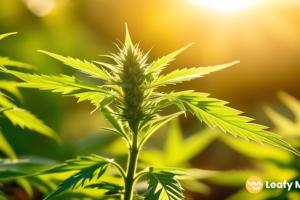
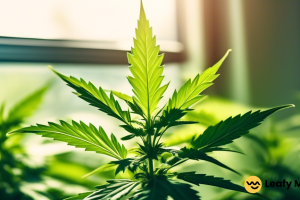





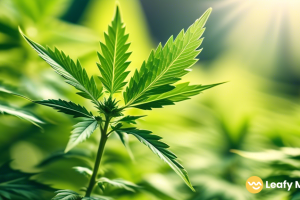
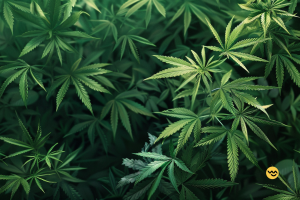
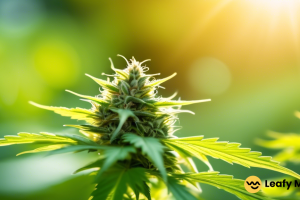
Leave a Reply